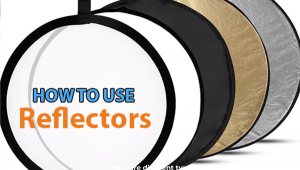Down By The River: Tom Bol’s Remote Possibility
While most of Tom Bol’s outdoor and adventure images begin with specific assignments or great scenic opportunities, there are a good number that begin with Tom asking himself, “What if…?”

All Photos © Tom Bol Photography
For example: “What if I could light up the water next to a sea kayak from below?” The answer: “Maybe I’d have a pretty cool photo. Maybe it’d be even cooler if the boat were lit up from inside as well.”
The inside lighting was pretty much the easy part. Put a Nikon SB-900 Speedlight in the bow hatch, put another one in the stern hatch, and a third one in the cockpit seating area, with each flash in a Ziploc bag and accompanied by a PocketWizard remote. “Super tech,” Tom says of that part of the plan, which, it turned out, worked perfectly as the light from the hatch strobes came through the plastic polymer body of the boat and the flash from the cockpit Speedlight lit up the face of Tom’s volunteer kayaker—his wife, Cree.


The necessary ingredients for lighting up the water were two waterproof cases, each containing a Speedlight and a PocketWizard, one on either side of the kayak. “The first trick was to get waterproof cases with clear covers,” Tom says, “and it took some web exploring for me to find them at the Ameripack site. I even called to make sure: ‘Got a case with a clear top? With these dimensions? Got two of them?’”
Even though the cases were designated waterproof, Tom later decided to put the flash and the PocketWizard inside a Ziploc for added insurance. “I was nervous about what might happen,” he says.
But before anything could happen, the cases, which tend to float even with stuff inside them, had to sink, so two cinder blocks and a pair of cam straps came into play.


Then it was time for trial and error in the Cache la Poudre River near Tom and Cree’s home in Fort Collins, Colorado. “What we found was that the radio signal to the PocketWizards worked reliably only when the flashes were maybe a foot or so underwater,” Tom says. “The first time I put the cases in the water they went down about three and a half feet to the bottom, and we got inconsistent results; sometimes one flash would pop, sometimes two. So we ended up positioning the kayak in shallower water.”
To his relief, the cases were, as advertised, waterproof, though when he put the first one into the river he saw bubbles rising. “I thought the case was taking on water, so I worked fast, but it wasn’t leaking. The bubbles might have been from the case settling into the water or from some disturbance of the river bottom.”
No one is suggesting you emulate Tom and take any flash units in any containers and sink them in any river. If something goes wrong, voiding the warranty will be the least of your problems, as the total trashing of perfectly good gear, not to mention a Costco-sized package of AA batteries, will likely ensue.

Tom’s verdict on the images: “The photo I like best, that I think looks pretty cool, is the one without the underwater lights, with just the hatch and cockpit flashes firing. The underwater lights look good, but they didn’t disperse enough for my taste.”
Still, what motivates these adventures for Tom isn’t the end result. “It’s the process, the experiment…that’s the most important part.”
Tom’s website, www.tombolphoto.com, features a selection of his outdoor, sports, and adventure photos and a link to his blog.
- Log in or register to post comments
















































